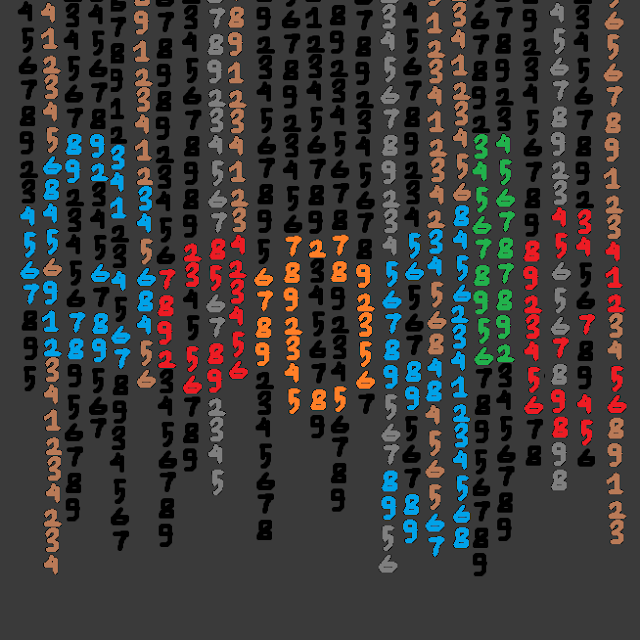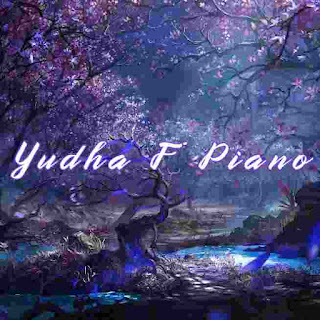Final Fantasy Piano Collections - A Legacy in Keys - Blog No. 106
In the quiet moments of fantasy, between the clashing of swords and the casting of spells, lies a world crafted not only by pixels and dialogue—but by piano keys. The Final Fantasy Piano Collections, a series of evocative piano arrangements from one of gaming’s most iconic franchises, transcend gaming itself.
They invite listeners into a world where melody speaks louder than magic, and nostalgia flows freely with each note. This is the story of how a legacy in keys was born—and how it continues to enchant hearts across generations.
Related
The Birth of a Musical Legacy
The year was 1987 when Final Fantasy first graced the Nintendo Entertainment System. It was meant to be Square’s final game, but fate had other plans. Beyond the innovative gameplay and fantastical worlds, one element stood out—the music.
Composed by the legendary Nobuo Uematsu, the Final Fantasy soundtrack became a core part of the series' identity. From the "Prelude" arpeggios to the stirring “Main Theme,” Uematsu’s compositions were emotional, grand, and unforgettable. But it wasn’t until 1992 that fans were gifted a new way to experience them—with the release of Final Fantasy IV: Piano Collections.
What Are the Final Fantasy Piano Collections?
The Piano Collections are officially arranged albums featuring solo piano renditions of the original game soundtracks. Each track is meticulously arranged to capture the essence of the original while elevating it through classical interpretation. These aren’t simple transcriptions—they are full-fledged reimaginings that channel the emotional depth of each piece.
Over the years, Piano Collections were released for several mainline titles:
-
Final Fantasy I–III (via fan and arranged albums)
-
Final Fantasy IV
-
Final Fantasy V
-
Final Fantasy VI
-
Final Fantasy VII
-
Final Fantasy VIII
-
Final Fantasy IX
-
Final Fantasy X
-
Final Fantasy XII
-
Final Fantasy XIII (unofficial and fan-arranged versions are also celebrated)
Each album boasts arrangements by renowned composers and pianists such as Shiro Hamaguchi, Masashi Hamauzu, Reiko Nomura, and Aki Kuroda, who lend their own styles while preserving Uematsu’s timeless core.
The Power of a Single Note: Storytelling through Piano
There is something uniquely human about a piano. Its timbre is simultaneously gentle and powerful—capable of joy, sorrow, longing, and triumph. This mirrors the very nature of Final Fantasy, a series that has always been about emotion-driven storytelling.
Take “Aerith’s Theme” from Final Fantasy VII. In its piano form, the track transforms from a background melody into a devastating soliloquy. It reflects not just Aerith’s purity, but the grief of her loss. Without words, it tells a story that players already know—yet it feels new each time.
Or consider “Zanarkand” from Final Fantasy X. Even outside the context of Tidus and Yuna’s pilgrimage, the piano version conveys loneliness, destiny, and quiet rebellion. It’s a melody that feels like walking through the ruins of your past while the future waits silently.
Beyond the Screen: The Global Appeal of Final Fantasy Piano Music
What makes the Final Fantasy Piano Collections truly iconic is how they have leapt beyond their origin medium. Gamers, musicians, and classical music lovers alike have embraced these arrangements.
You’ll find:
-
Piano recitals on YouTube with millions of views.
-
Scores and tutorials shared across communities like MuseScore and Piano Marvel.
-
Cover albums and performances by artists like Kyle Landry, Yiruma, and Kumi Tanioka.
-
Live concerts such as Distant Worlds and A New World: Intimate Music from Final Fantasy where piano solos are often a highlight.
The collections have become study music, wedding music, lullabies, and even the inspiration behind original compositions. It’s rare for video game soundtracks to achieve such transcendence—but Final Fantasy has always been an exception to the rule.
From Pixel to Pedal: How the Arrangements Are Made
Behind each Piano Collection is a careful artistic process. The goal isn’t just to adapt—it’s to re-interpret. Arrangers strip away layers of orchestration and synth to expose the beating heart of each composition.
For instance:
-
Final Fantasy VI: Piano Collections leans into Romantic-era influences, with sweeping arpeggios and Debussy-esque flourishes.
-
Final Fantasy VII balances minimalism with drama, reflecting the cyberpunk tension of Midgar.
-
Final Fantasy VIII dives into dreamy impressionism, with tracks like “Fisherman’s Horizon” evoking Satie and Chopin.
Arrangements are created with varying difficulty levels. Some pieces are approachable for intermediate pianists, while others (like “J-E-N-O-V-A” or “Battle with the Four Fiends”) challenge even conservatory-level performers.
The Emotional Core of Final Fantasy
What makes these piano arrangements endure isn’t just nostalgia. It’s emotional truth. The music connects with listeners on a deep level—whether they’ve played the games or not.
There’s a therapeutic quality to tracks like:
-
“Terra’s Theme” – which speaks of identity and struggle.
-
“The Promise” from Final Fantasy XIII – echoing hope amidst chaos.
-
“Fragments of Memories” – evoking the bittersweet echoes of Final Fantasy VIII.
Each album becomes a companion, not just a playlist. It travels with you—through heartbreak, triumph, growth, and silence.
A Legacy That Continues to Inspire
Despite the rise of orchestral and digital renditions, the piano remains the soul of Final Fantasy’s musical legacy. New generations of fans continue to discover these albums, often after hearing a track online or during gameplay.
Fan projects like:
-
Materia Collective’s “Piano Collections”
-
Piano Opera: Final Fantasy I–IX
-
YouTube channels dedicated to Final Fantasy piano covers
…continue the tradition, keeping the legacy alive. Many pianists first touched the instrument not because of Mozart, but because they heard “To Zanarkand” and wanted to feel that music in their hands.
Where to Listen & Learn
For those inspired to dive in, here’s where to start:
| Album | Title | Year | Highlights |
|---|---|---|---|
| Final Fantasy IV | Piano Collections | 1992 | “Theme of Love”, “Troian Beauty” |
| Final Fantasy VI | Piano Collections | 1994 | “Terra”, “Celes”, “Kefka” |
| Final Fantasy VII | Piano Collections | 2003 | “Tifa’s Theme”, “Aerith’s Theme” |
| Final Fantasy VIII | Piano Collections | 2000 | “Fisherman’s Horizon”, “The Oath” |
| Final Fantasy IX | Piano Collections | 2001 | “Melodies of Life”, “Rose of May” |
| Final Fantasy X | Piano Collections | 2002 | “To Zanarkand”, “Besaid Island” |
| Final Fantasy XIII (fan arrangements) | n/a | Various | “The Promise”, “Lightning’s Theme” |
Resources for learners:
-
Sheet music: Official Square Enix Piano Collections books
-
Tutorials: YouTube (search by song title + “piano tutorial”)
-
Apps: Flowkey, Synthesia, Musescore, Piano Marvel
Related
Final Thoughts: Keys to the Heart
In the grand symphony of video game history, few musical projects resonate as deeply as the Final Fantasy Piano Collections. These albums don’t just echo memories—they reawaken them. They don’t just play notes—they breathe stories.
For fans old and new, the piano is a gateway. A bridge between fantasy and reality. Between past and present. Between imagination and feeling.
Whether you’re a lifelong Final Fantasy player, a pianist seeking new inspiration, or someone discovering these melodies for the first time—know this:
The legacy in keys is still being written. And all you need to begin… is to press play.



Comments
Post a Comment